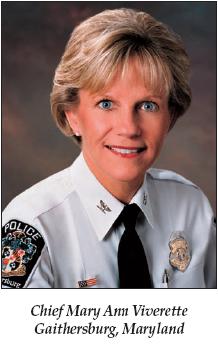 Over the last 15 years, communities in the United States have witnessed a remarkable decline in the rate of crime. Years of effective, aggressive efforts by federal, state, and local law enforcement agencies have helped transform our neighborhoods from places of fear to safer, more secure communities.
Over the last 15 years, communities in the United States have witnessed a remarkable decline in the rate of crime. Years of effective, aggressive efforts by federal, state, and local law enforcement agencies have helped transform our neighborhoods from places of fear to safer, more secure communities.
Our success in reducing the level of crime can be traced to several factors: The typical police officer of today is better trained, better educated, and better equipped than his or her predecessors. In addition, advances in communication and information technologies have allowed law enforcement administrators to develop comprehensive, integrated crime-reduction strategies.
But no factor has been more crucial to the reduction in crime levels than the partnership between law enforcement agencies and the communities they serve. By embracing the philosophy of community policing, law enforcement agencies have been able to work with citizens to create safer towns and cities. We have learned that to be effective, police cannot operate alone; they require the active support and assistance of their communities.
Central to maintaining that support is the recognition that law enforcement agencies must reflect the diversity of the communities they serve. Every day, our officers come into contact with individuals from a different cultural backgrounds, socioeconomic classes, religions, sexual orientations, and physical and mental abilities. Each of these groups brings a different perspective to police-community relations and, as a result, our officers must be prepared to respond to each group in the appropriate fashion. Failure to recognize and adjust to community diversity can foster confusion and resentment among citizens and quickly lead to a breakdown in the critical bond of trust between a law enforcement agency and its community.
But the realization of the critical importance of diversity in law enforcement certainly comes as no surprise, either to the IACP or me.
When I became a law enforcement officer in 1979, women were severely underrepresented in policing. Unfortunately, despite the fact that 26 years later a woman is president of the IACP, only 12-13 percent of the nation’s police officers are women.
These numbers represent an improvement over those of 30 years ago, but they are still far from where they need to be. The same can be said of many other underrepresented racial and ethnic groups as well. Things have gotten better, but we still have a long way to go.
That is why the IACP has been and remains so committed to developing successful strategies and approaches that can be used to increase the diversity of our nation’s law enforcement agencies.
In 1997 IACP established its first ad hoc panel on women in policing. Through the work of this committee, the IACP identified and began to address issues such as recruitment, mentoring, agency hiring and promotional policies, and training needs related to increasing the role of women in policing.
When this committee last met in March of this year, it became clear that diversity in policing was such a critical issue to the law enforcement community that a broader, more comprehensive effort on behalf of the IACP was both appropriate and necessary.
That is why one of my first actions after being sworn in as president was to establish the Diversity Coordinating Panel at the IACP. This panel will pull together the leaders of many IACP committees, sections, and divisions to ensure that the importance of diversity is a central focus in all relevant IACP projects.
For example, IACP’s soon-to-be-released publication, “A Leadership Guide for Protecting Civil Rights,” emphasizes the importance of diversity in a police agency and contains several guidelines to aid agencies as they strive to ensure diversity in their workforces.
In addition, the training curriculum at the IACP’s recently established Center for Police Leadership focuses on the need for diversity in law enforcement agencies, including gender, racial, ethnic, and generational diversity.
As you can see, the IACP has been and remains committed to promoting diversity and highlighting the critical role that it plays in establishing and a safe community. I urge you to take advantage of the IACP’s efforts in this area to assist you in your efforts to promote diversity within your agency, thereby enhancing the vital relationship between citizens and police officers in your community.
Our success in reducing crime over the past 15 years has only been possible because leaders in both law enforcement and the community realized that law enforcement officers cannot merely patrol a community must also be part of the community. If we wish to build on our success then we, as police chiefs, must work to ensure that this vital partnership not only survives but flourishes.


